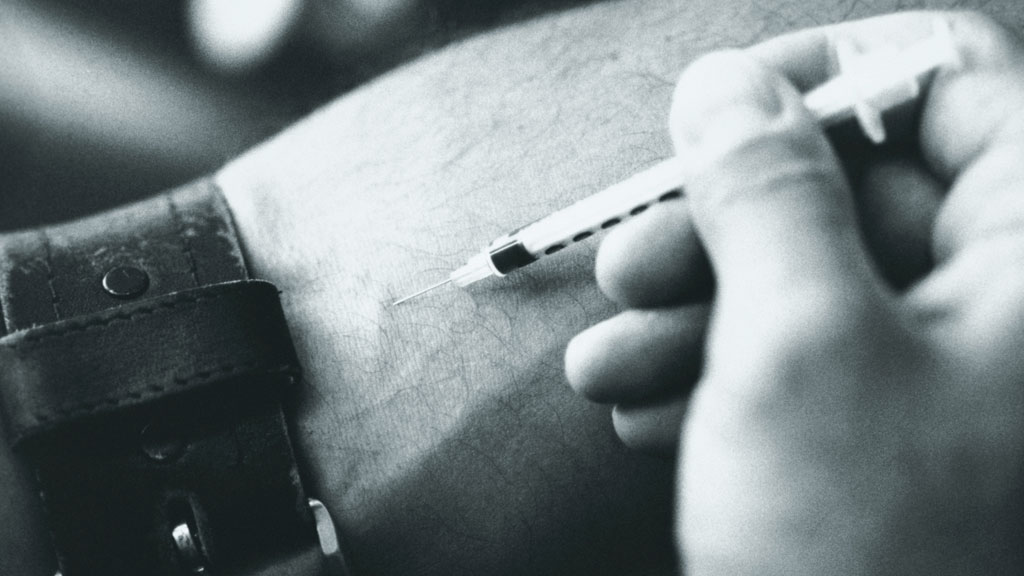Will recession mean a new generation of addicts?
Heroin users seeking treatment are getting older, according to new research, but there are fears the UK’s most recent recession could lead to a new generation of addicts.

The research, from the NHS’s National Treatment Agency for Substance Misuse (NTA), showed that, overall, the number of people seeking treatment for drug addiction is declining – in line with government figures for wider drug use.
However, the one age group that is increasingly seeking treatment is the over-40s. Nearly 62,000 people over 40 are currently receiving treatment for drug addiction in the UK, compared with 58,617 the year before.
The over-40s age group is the only one which has seen an increase of people in treatment in the last year, and has the number is almost double that amount in treatment in 2005/2006. It is also leading to an increasing number of deaths in the age range – with 802 dying from drug misuse in 2011 compared to 504 in 2001.
Hopelessness among young people, provides fertile territory for the next drugs threat to take hold. NTA chief executive Paul Hayes
The 18-24 age group has seen those in treatment decline from 32,948 in 2005/2006 to 21,290 in 2011/2012.
Heroin is the most prolific drug being treated in the over-40s category, followed by combined heroin and crack addiction. Fifty five per cent of over-40s being treated for drug dependency are addicted to heroin, the survey found, with another 32 per cent addicted to a combination of heroin and crack.
80s recession
One of the reasons for the large amount of over 40s seeking treatment is the recessions of the 80s and 90s, the chief executive of the NTA Paul Hayes said.
“There’s an increasing challenge from older drug users, many of whom are still in the system and others who began using in the 80s and 90s are now beginning to access treatment as their health deteriorates,” he said.
“These people became addicted to heroin during the epidemics of the 80s and 90s. Some are trying treatment for the first time this year, others have tried treatment, relapsed and then come back in, or have entrenched use that presents a significant issue for treatment services, not least because of the sheer numbers in treatment who are aged over 40.”
Any move towards legalisation would certainly mean an increase in use, particularly in the most problematic drugs. Paul Hayes
He said that the younger age groups were less likely to use heroin or crack because they are “savvier”, and have seen the impact of this kind of drug misuse. However, he warned that the impact of the most recent recession of drug dependency are yet to be seen.
No-one could have predicted in the 1980s that one of the consequences of the recession would have been mass heroin use,” he said. “It came from nowhere.”
Whilst this recession has not produced the same levels of youth unemployment that the 1980s did, youth unemployment, hopelessness among young people, provides fertile territory for the next drugs threat to take hold.”

Health budgets
Another concern is that the transfer of responsibility for health budgets transferring to local authorities from April next year, investment in drugs treatment could suffer.
“There is a risk that squeezed local authorities will disinvest, not necessarily from direct treatment provision, but from services that support drug users’ long-term recovery”, said Mr Hayes.
“That will then impact on the likelihood of people being able to sustain the benefits that they’ve accrued in treatment.”
Heroin is the most prevalent form of drug addiction being treated across all age groups, with a total of 96,343 people currently being treated. Combined crack and heroin addiction accounts for 63,199 people currently being treated.
Amongst 18 to 24 year olds, cannabis addiction is the main reason for treatment, followed by heroin and then heroin/crack addiction.
Legalisation?
Heroin has low prevalence across the UK when compared to other class A drugs such as MDMA and cocaine. Around 2.2 per cent of the population of England and Wales is reported to have used cocaine in the last year, according to the latest Home Office Crime Survey, and around 1.4 per cent of the population was reported to have used MDMA. This compares with around 0.5 per cent of the population reported to have used all other class hallucinogens, including heroin.
The number of people whose main problem is ecstacy remains very low. Five per cent of people being treated for drug addiction are being treated for cocaine addiction. Heroin and crack feature so highly because of the obvious dangers associated with the drug.
Channel 4 recently conducted a scientific study into the effects of MDMA (link: . The survey has so far shown that 97 per cent of people don’t believe the government’s policy on drugs is working, and that 61 per cent of people believe MDMA should be legalised.
Mr Hayes, however, rejected calls for legalisation of certain drugs, saying: “Any move towards legalisation would certainly mean an increase in use, particularly in the most problematic drugs.
He said those who would suffer with consequences of legalisation would be people “who struggle with life in Liverpool and Manchester and the East End of London”.
The survey on drug abuse is still live, and can be taken here.
-
Latest news
-
As India goes to the polls in the world’s largest election – what do British-Indians think?6m

-
Tees Valley: Meet the candidates in one of the biggest contests coming up in May’s local elections4m

-
Keir Starmer says public sector reform will be a struggle7m

-
Nicola Sturgeon’s husband Peter Murrell charged with embezzlement of funds from SNP1m

-
Ukraine might finally get $60billion in American weapons and assistance to defend against Russia3m

-




